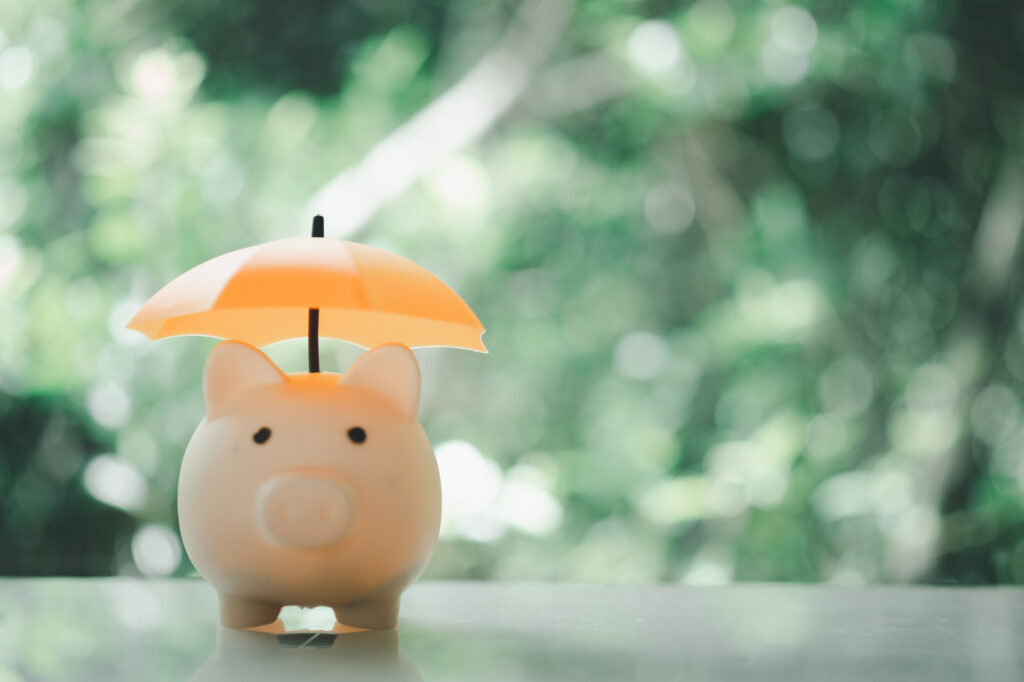
Contents
What is a Rainy Day Fund?
The term “rainy day fund” comes from the idea of preparing for unexpected minor expenses, much like how one would prepare for a rainy day. It evokes the concept of setting aside money for life’s smaller, unforeseen events that aren’t emergencies but still require financial attention.
Other terms for Rainy Day Fund
There are various terms for a “rainy day fund” all serving the purpose of providing a financial safety net for unexpected minor expenses. Here are the top ten synonyms.
- Contingency Fund
- Reserve Fund
- Buffer Fund
- Safety Net Fund
- Emergency Cash Reserve
- Financial Cushion
- Unexpected Expense Fund
- Crisis Fund
- Backup Savings
- Slush Fund
Why is a Rainy Day Fund Important?
A rainy day (or contingency) fund is essential for financial stability. It allows you to manage minor, unexpected expenses without disrupting your regular budget or tapping into more critical savings. This fund can cover costs such as small car repairs, unexpected medical bills, or minor home maintenance, helping you avoid financial stress.
Emergency Fund vs. Rainy Day Fund
How is a rainy day fund different from an emergency fund?
Although both funds are meant to handle unexpected expenses, they differ in scope and size. An emergency fund is for significant, life-altering events like job loss, major health issues, or extensive home damage. On the other hand, a rainy day (or safety net) fund is for smaller, more frequent expenses. An emergency fund is typically larger, meant to cover several months of living expenses, while a rainy day fund is smaller and more flexible.
How much money should be in your Rainy Day Fund?
Financial experts generally suggest that a rainy day fund should cover 1-3 months of essential expenses. This amount provides a cushion for managing minor financial surprises without depleting your emergency fund or incurring debt.
Factors to Consider when Funding
Several factors can influence the size of your rainy day fund:
- Income Stability: If your income is unpredictable, a larger fund might be necessary.
- Expenses: Higher living costs may require a more substantial fund.
- Family Size: More dependents can mean higher potential unexpected expenses.
- Health: Frequent medical expenses might warrant a larger fund.
- Home and Car Ownership: Owning property or vehicles can lead to more frequent repairs and maintenance costs.
Determining Your Savings Amount
To determine the appropriate amount for your rainy day fund:
- Assess Monthly Expenses: Calculate your essential monthly expenses.
- Consider Potential Minor Expenses: Factor in possible small, unexpected costs.
- Set a Target: Aim to save 1-3 months of essential expenses.
- Adjust as Needed: Reevaluate and adjust your target based on changes in income, expenses, or lifestyle.
Real-life Rainy Day Fund Examples
Here are a few scenarios where a rainy day (or crisis) fund can prove invaluable:
- Car Repairs: Covering the cost of a new tire or minor engine repair.
- Home Maintenance: Paying for a plumber to fix a leak.
- Medical Bills: Handling an unexpected doctor’s visit or medication.
- Appliance Replacement: Replacing a broken washing machine.
Strategies to Build a Rainy Day Fund
Implement these practical strategies to gradually build and maintain a rainy day fund:
- Automate Savings: Set up automatic transfers to your savings account.
- Cut Unnecessary Expenses: Identify and reduce non-essential spending.
- Increase Income: Consider side jobs or selling unused items.
- Use Windfalls Wisely: Allocate bonuses, tax refunds, or gifts towards your fund.
Common Rainy Day Fund Mistakes
Avoid these frequent mistakes to ensure your rainy day fund remains effective and reliable:
- Underfunding: Not saving enough to cover potential expenses.
- Overlapping Funds: Mixing your rainy day fund with your emergency fund.
- Ignoring Inflation: Failing to adjust your savings for rising costs.
- Inconsistent Savings: Not regularly contributing to the fund.
Maintaining Rainy Day Fund
Follow these tips to ensure your rainy day fund stays robust and ready for unexpected expenses:
- Regularly Review: Periodically assess and adjust your fund size.
- Replenish Promptly: Refill the fund immediately after using it.
- Stay Disciplined: Avoid using the fund for non-urgent expenses.
- Monitor Expenses: Keep track of minor expenses to better predict future needs.
Other Savings Advice
It’s beneficial to maintain multiple savings accounts for different purposes. At a minimum, consider having:
- Emergency Savings: For major, life-altering events.
- Rainy Day Savings: For minor, unexpected expenses.
- Short-term Goals: For purchases or events planned within the next year.
- Long-term Goals: For future needs like retirement, education, or buying a home.
By clearly defining these categories, you can better track your progress and ensure funds are allocated appropriately.
Conclusion
Having a well-maintained rainy day fund provides peace of mind and financial security, ensuring that life’s small surprises don’t derail your financial health. By understanding its purpose, maintaining adequate savings, and avoiding common pitfalls, you can better navigate the financial ups and downs of everyday life.
Featured Image Credit: Deposit Photos




